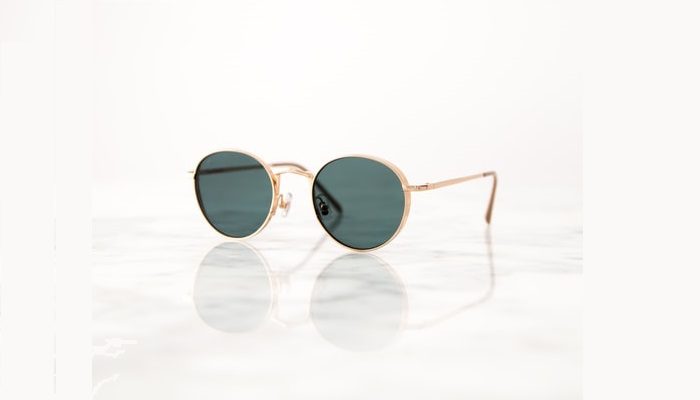Eyes are one of the most important sense organs and clear eyesight is critical as humans perceive up to 80 per cent of all impressions by means of sight. Eyewear therefore plays an important role in human life whether it is prescription glasses or fashionable sunglasses. Humans have been wearing glasses since the 13th century but as time advances eyewear is becoming not only essential but also a statement.
The eyewear market size is expected to register a CAGR of 7.6% and reach USD 263.73 billion in 2028. As people become more aware of eye disorders, there is a greater need for eyewear. According to the World Health Organization (WHO), between 2015 and 2020, there were approximately 2 billion new cases of myopia, or near-sightedness. New companies are entering the market, bringing with them new technologies that are fueling global market demand. Online sale of eyewear has also attributed to this growth in eyewear market.
Estimates show that by 2050, half of the world’s population will need prescription eyewear. A combination of factors will contribute to the increasing need of glasses.
Children And Teens Needing More Prescription Eyewear:
Around 20% of children in the United States needed prescription eyewear when Gen Xers were growing up in the 1970s. But this percentage has drastically increased in the recent decades. Estimates claim that the percentage of youth with myopia or near-sightedness is much higher, in excess of 45 percent. Estimates imply that up to a quarter of the world’s population will be near-sighted by 2050. Increased screen time could be one of the causes. Children and teens nowadays spend a significant amount of time staring at one screen or the other. It might not all be just watching television or playing games on smartphones. They may be attending online classes and reading books online.
It has been found that though children have been reading books for hundreds of years, books have not strained their eyes nearly as much as screens have. Also books are held further away from the eyes than smartphones. Looking at devices held too close to the eyes sends a signal to the brain that may exercise the eye muscles differently and contribute to near-sightedness in children. Though awareness about eyesight testing at a younger age might be playing a role in this increased detection of myopia in children, ophthalmologists who had been practicing for decades say myopia levels have definitely increased in children overall and the increasing number cannot be wholly attributed to increased awareness.
Request PDF Sample of Eyewear Industry – https://www.reportsanddata.com/sample-enquiry-form/2993
Aging Global Population Directly Proportional To Increased Need Of Prescription Eyewear:
Aging is a factor that brings about the onset of myopia. By 2030, over 2.6 billion consumers are estimated to be in need of some sort of presbyopia-related eye care solution. This will also be offering growth opportunities for eyewear market. With better health awareness, more active lifestyles, and better healthcare, people are not only living longer lives but are refusing to look old while they age. Eyewear has long been considered to make people look older but this is rapidly changing. Eyewear is becoming more fashionable to give older people a more youthful appearance.
On the technical side, innovation in eyewear can make life easier for seniors. The latest innovation in the eyewear space is smart glasses. Smart glasses are essentially wearable computers that are designed to resemble regular eyewear in appearance and feel. However, the built-in technology is significantly more advanced than a standard pair of bifocals. Face and image recognition technologies and other applications can be included in smart glasses to assist seniors with their daily activities. The glasses allow the wearer to see the computer screen. Eye tracking and memory study can also be done using the glasses themselves. Many prototypes and models can connect to a smartphone, effectively converting apps into a wearable form factor. However age, race, level of education and economic background all play a significant role in whether seniors would be able to afford such advanced eyewear or even a normal pair of new glasses.
Online Channels To Impact The Use Of Eyewear:
In recent decades, eyewear has become as much a fashion statement as clothes and shoes. The apparel industry has already been revolutionized by the advent of online sales channels. Zenni Optical which holds 50% of the online eyewear market share reported that it has registered a capital growth of 25 to 30 percent every year. Since the company started in 2003, they have sold 20 million pairs of glasses which is equal to five-year sales volume of 1,000 brick and mortar stores. Not only are their eyewear cheaper but they are also premium quality and often come with offers like “2-for-1”, or “second unit half price”. This is made possible as online merchants create a product from design through production, and sell direct-to-consumer thus saving money. Though getting a prescription from an optometrist or ophthalmologist is still an obstacle in the way of buying eyewear online, this is expected to change over time just like the problem of fitting clothes perfectly has been overcome and is no more a hurdle in online clothes shopping.
To identify the key trends in the industry, click on the link below: https://www.reportsanddata.com/report-detail/eyewear-market


































